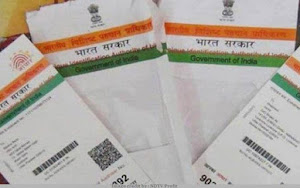According to the United Nations World Water Development Report, 2022, with the rapid withdrawal of fresh water from streams, lakes, aquifers and man-made reservoirs, there is imminent water stress around the world. There is increasing global concern regarding water stress and water scarcity. The situation is becoming more serious due to the changing climate trends, recurring natural disasters and sudden spurt in epidemics.
Promoting sustainable economic growth is paramount in India's transition towards a $5 trillion economy. Water plays the role of being an important resource in this endeavour. India, which supports about 17% of the world's population, holds only 4% of the world's fresh water resources, which clearly highlights the need for its judicious use and efficient water risk management.
Water Stress and Water Risk:
>>Water stress occurs when the demand for water exceeds the amount available over a period of time or when poor water quality restricts its use.
-Components of Water Stress:
Availability
Quality
Accessibility
>>Water risk refers to the likelihood of a water body facing water-related challenges (such as water scarcity, water stress, floods, infrastructure degradation, drought, etc.) due to deteriorating water health and inefficient water governance. Refers.
Falkenmark Indicator or Water Stress Index:
>>It correlates the total amount of fresh water in a country to its total population and indicates the pressure that population (including ecosystem requirements) exerts on water resources.
>>If the amount of renewable water per capita in a country
-If it is less than 1,700 cubic metres, then it is believed that the country is facing water stress.
-If it is less than 1,000 cubic meters, then it is believed that the country is facing water scarcity.
-If it is less than 500 cubic meters, then it is believed that the country is facing absolute water scarcity.
Status of Water Management in India
>>Current Status: India is the largest extracter of ground water in the world. This amount is more than the combined extraction of the world's second and third largest groundwater extractors (China and the United States).
However, in India only 8% of the extracted groundwater is used as drinking water.
80% of it is used for irrigation
The remaining 12% is used by industries.
NITI Aayog's Composite Water Management Index has warned about the looming water crisis in India where more than 600 million people of the country are facing severe water scarcity.
It has also been estimated that by the year 2030, the country's water demand will double as compared to the available supply.
>>Constitutional Provisions:
-Fundamental Right: Water is a fundamental requirement for human existence and is a part of the Right to Life enshrined in Article 21 of the Constitution of India.
-Entry 56 of the Union List: The Central Government may regulate and develop inter-State rivers and river valleys to such extent as may be determined by Parliament to be appropriate in the larger public interest.
-Entry 17 of the State List: It deals with water supply, irrigation, canals, drainage, embankments, water storage and water power.
-Article 262: It states that in case of disputes relating to water—
--Parliament may, by law, provide for the adjudication of any dispute or complaint in relation to the use, distribution or control of the waters of, or in, any inter-State rivers or river valleys.
--Parliament may, by law, provide that the Supreme Court or any other court shall not exercise jurisdiction in respect of any such specified dispute or complaint.
>>Legal Provisions:
-Inter-State Water Disputes Act, 1956: The Inter-State Water Disputes Act enables states to nominate the central government to set up an Advisory River Board to resolve issues in inter-state cooperation. make capable.
-The Water (Prevention and Control of Pollution) Act, 1974: It sets up an institutional framework for the prevention and control of water pollution by maintaining standards of water quality.
--The Central Pollution Control Board (CPCB) is a statutory organization constituted in September, 1974 under the Water (Prevention and Control of Pollution) Act, 1974.
>>Status of Water Management in India
-Current Status: India is the largest extracter of ground water in the world. This amount is more than the combined extraction of the world's second and third largest groundwater extractors (China and the United States).
--However, in India only 8% of the extracted groundwater is used as drinking water.
--80% of it is used for irrigation
--The remaining 12% is used by industries.
--NITI Aayog's Composite Water Management Index has warned about the looming water crisis in India where more than 600 million people of the country are facing severe water scarcity.
=It has also been estimated that by the year 2030, the country's water demand will double as compared to the available supply.
Constitutional Provisions:
Fundamental Right: Water is a fundamental requirement for human existence and is a part of the Right to Life enshrined in Article 21 of the Constitution of India.
Entry 56 of the Union List: The Central Government may regulate and develop inter-State rivers and river valleys to such extent as may be determined by Parliament to be appropriate in the larger public interest.
Entry 17 of the State List: It deals with water supply, irrigation, canals, drainage, embankments, water storage and water power.
Article 262: It states that in case of disputes relating to water
-Parliament may, by law, provide for the adjudication of any dispute or complaint in relation to the use, distribution or control of the waters of, or in, any inter-State rivers or river valleys.
-Parliament may, by law, provide that the Supreme Court or any other court shall not exercise jurisdiction in respect of any such specified dispute or complaint.
Food security risk:
Water is essential for crop and livestock production. Water is extensively used for irrigation in agriculture and water is also a major source of domestic consumption. The combination of rapidly depleting groundwater levels and inefficient river water management can lead to food insecurity.
The resulting effects of water and food shortages can make basic livelihoods vulnerable and exacerbate social tensions.
Increasing water pollution: A large amount of domestic, industrial and mining wastes are discharged into the water bodies, which can lead to water borne diseases. In addition, water pollution can lead to eutrophication, which can seriously affect aquatic ecosystems.
Over-exploitation of groundwater: According to the latest study by the Central Ground Water Board, 256 out of 700 districts in India have reported critical or over-exploited groundwater levels.
Due to over-dependency and continuous consumption, the pressure on ground water resources is increasing and as a result, wells, puddles, ponds etc. are drying up. Due to this the water crisis is getting deeper.
>>Current Government Initiatives Related to Water Management
-National Water Policy, 2012
-Prime Minister Agricultural Irrigation Scheme
-Jalshakti Abhiyan - 'Catch the Rain' campaign
-Atal Ground Water Scheme
>>way forward
-Sustainable Ground Water Management: There is a need to shape an appropriate mechanism and rural-urban integrated projects for artificial recharge of ground water and rain water harvesting at household level, conjunctive use of surface water and ground water and regulation of reservoirs.
--In addition, there is also a need to improve water infrastructure (wells, dams, storage tanks, pipelines, etc.), which will not only reduce the wastage of clean water, but also reduce the number of people who struggle to get clean water every day. have to do.
-'Smart' agriculture: Drip irrigation is an effective technique that can reduce water consumption by 20-40% while increasing crop yields by 20-50% compared to furrow/flood irrigation.
--Along with this, cultivation of less water-intensive crops like pulses, millets and oilseeds should be encouraged in water scarce areas.
-Blue-Green Infrastructure: Incorporating blue-green elements into modern infrastructure planning can be an effective way to provide a sustainable natural solution for watershed management and eco-friendly infrastructure.
--The term green in blue-green infrastructure refers to gardens, permeable pavements, green roofs, etc. while blue refers to water bodies such as rivers, canals, ponds, and wetlands.
-Water Conservation Zone: There is a need to focus towards better data discipline and efficient water governance with respect to the status of water bodies at the regional, state and national levels and establish different water conservation zones.
-Taking advantage of modern water management techniques: Information technology can be integrated into water-related data systems. In addition, breakthroughs in research and technology in recent years have made even water that was previously unfit for consumption clean and safe for consumption.
--The most commonly used such techniques include electrodialysis reversal (EDR), desalination, nanofiltration, and solar and UV filtration.
विवरण/Description














